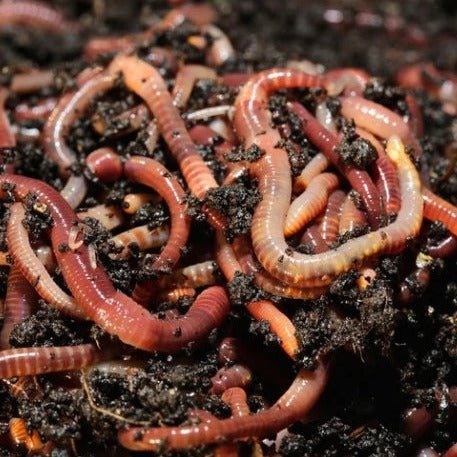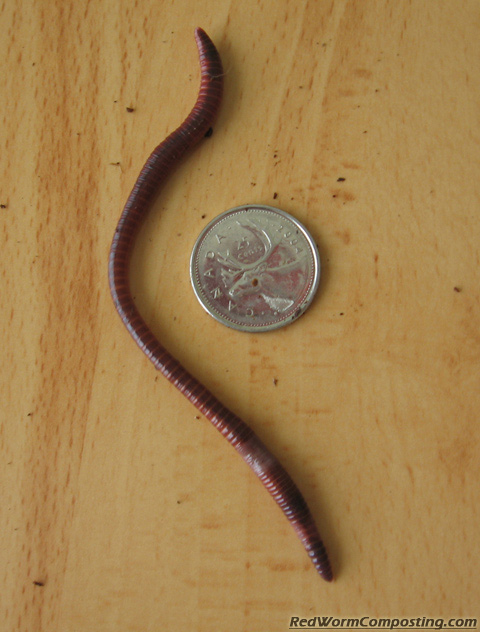Boost Your Fishing Success with Red Wiggler Express Bait Options
Boost Your Fishing Success with Red Wiggler Express Bait Options
Blog Article
Red Wigglers: The Unsung Heroes of Organic Waste Recycling
Red wigglers, or Eisenia fetida, offer as important agents in the natural waste recycling procedure, transforming thrown out products into important vermicompost. Their efficient failure of natural matter not just boosts soil quality however also adds to sustainable waste monitoring practices. As the globe increasingly seeks services to combat waste buildup and improve agricultural performance, understanding the role of these worms comes to be essential. What mechanisms permit them to flourish in compost settings, and how can they be effectively made use of in both domestic and industrial setups? Checking out these concerns exposes the broader effects of vermicomposting in our eco-friendly landscape.
What Are Red Wigglers?
The exceptional strength of red wigglers, clinically referred to as Eisenia fetida, underscores their vital role in organic waste recycling. These tiny, reddish-brown earthworms are usually discovered in breaking down organic issue, such as compost heap and manure stacks. Lake Hickory Bait. Unlike other earthworm species, red wigglers prosper in nutrient-rich settings and are very efficient at damaging down organic products, making them vital for vermicomposting

(Red Wiggler Express)In addition to their role in waste reduction, red wigglers add to soil health by improving dirt framework and aeration via their burrowing tasks (Lake Hickory Bait). Their existence in composting systems not just improves disintegration rates but also promotes a lasting approach to waste monitoring, highlighting their relevance in eco-friendly conservation initiatives
Benefits of Composting With Worms
Composting with worms, especially red wigglers, provides many benefits that enhance both waste management and dirt wellness. First, these worms efficiently break down natural waste, transforming it right into nutrient-rich vermicompost that enriches soil. This procedure increases decomposition, permitting a much faster recycling of kitchen scraps and various other natural products compared to conventional composting techniques.
In addition, the vermicompost generated by red wigglers is bristling with beneficial microorganisms, which help improve soil framework, aeration, and moisture retention. This enhances the total health of plants, advertising energetic growth and raised yields in yards and farming settings. Additionally, making use of worms in composting lessens the production of greenhouse gases, such as methane, contributing to a much more lasting waste management system.

Exactly How to Start Vermicomposting
Establishing a vermicomposting system is a straightforward process that can produce considerable benefits for both waste administration and dirt enrichment. To begin, choose an ideal container, such as a plastic container or wood box, with ample ventilation openings to guarantee proper air flow. The measurements need to preferably be around 2 feet by 3 feet, enabling sufficient area for the worms to flourish.
Next, prepare bed linen product, which can contain shredded newspaper, cardboard, or coconut coir. This bed linens ought to be moistened to create a suitable environment for the worms. When the bed linens is in place, present red wigglers (Eisenia fetida) right into the container, typically around one extra pound of worms for each square foot of surface.
Complying with the positioning of worms, include natural waste, such as fruit and veggie scraps, coffee premises, and smashed eggshells. Prevent adding milk, meat, or oils, as these can develop smells and attract pests. Place the bin in a shaded, temperature-controlled location to preserve optimal problems for worm activity. With these steps, you will efficiently start a vermicomposting system that adds to lasting waste management and improves your soil.
Preserving a Healthy Worm Bin
(Red Wiggler Express)Keeping a worm container prospering needs routine attention and care to make certain the wellness of the red wigglers and the performance of the composting process. Appropriate upkeep starts with monitoring the wetness degrees; the bin needs to be wet yet not saturated. An excellent regulation of thumb is to maintain an uniformity comparable to a wrung-out sponge.
Delicately blending the bed linens and food scraps every few weeks protects against compaction and guarantees that all worms have accessibility to oxygen. Additionally, it is important to feed the worms appropriately.
Temperature level regulation is an additional crucial element. Red wigglers grow in a range of 55 to 77 levels Fahrenheit. If the bin comes to be as well hot or chilly, the worms may become stressed out - Lake Hickory Bait. Finally, regularly check for indications of wellness, such as worm populace growth and the visibility of healthy spreadings. By faithfully taking care of these factors, one can keep a robust and effective worm bin.
Impact on Sustainable Living
The successful upkeep of a worm container not only benefits the wellness of red wigglers however also adds considerably to sustainable living methods. By recycling natural waste, such as cooking area scraps and backyard particles, red wigglers aid divert considerable amounts of material from land fills. This decrease in waste not just lowers greenhouse gas discharges yet additionally decreases the ecological worry connected with waste management.
Additionally, the spreadings produced by red wigglers offer as a nutrient-rich organic plant food, boosting dirt wellness and promoting plant growth. This natural alternative to chemical fertilizers supports sustainable agriculture and gardening methods, decreasing dependence on synthetic inputs that can damage ecosystems. Additionally, worm composting promotes recognition of waste management, urging individuals and neighborhoods to embrace more sustainable behaviors.

Verdict
In summary, red wigglers offer as important contributors to natural waste recycling through their effective decomposition of natural materials. Their capacity to generate nutrient-rich vermicompost boosts soil health and supports lasting farming practices. By incorporating vermicomposting into waste administration approaches, people and communities can considerably reduce waste while advertising environmental sustainability. The function of Eisenia fetida in promoting healthy and balanced ecological communities highlights the significance of these microorganisms in attaining useful source lasting living and improving soil fertility.
Report this page